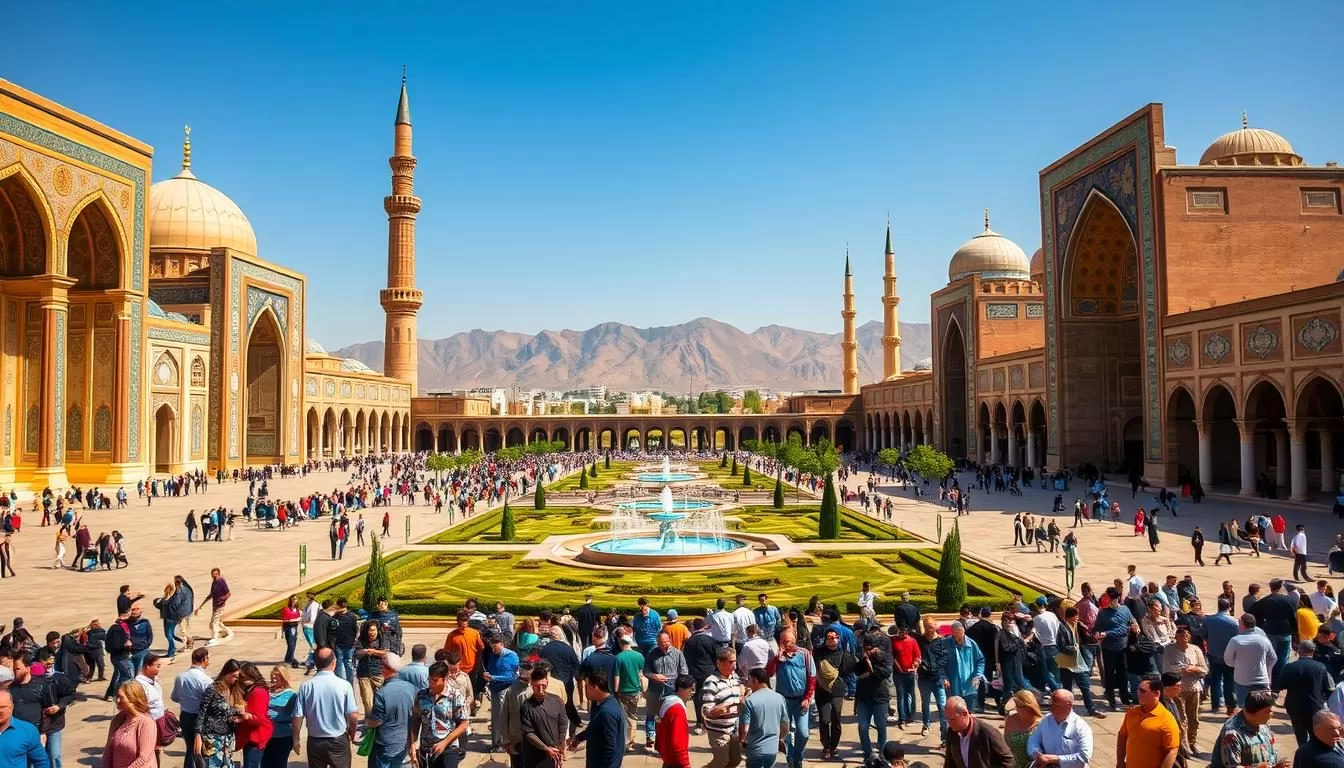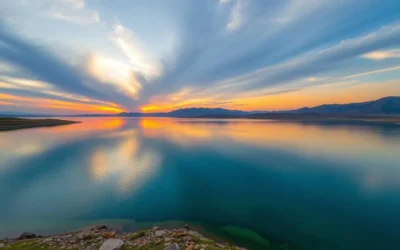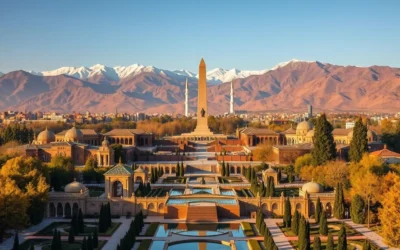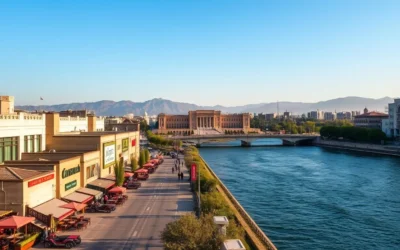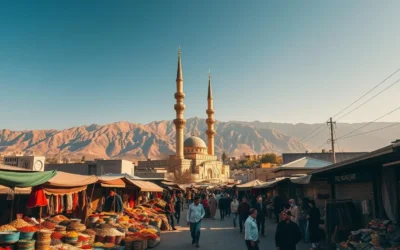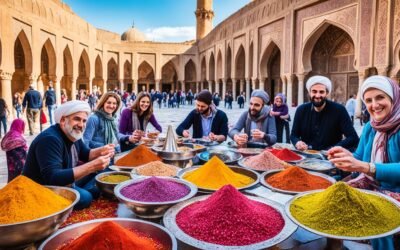✓ Accommodations ✓ Flights ✓ Rental Cars
Welcome to a city where history and modernity blend seamlessly. Known for its breathtaking architecture and vibrant culture, this destination offers a unique experience for every traveler. From stunning mosques to lively bazaars, there’s something for everyone to enjoy.
One of the highlights is Naqsh-e Jahan Square, one of the largest squares globally, showcasing Islamic architecture and Persian design. This UNESCO World Heritage Site is a must-visit, offering a glimpse into the city’s rich history. Nearby, you’ll find the Sheikh Lotfollah Mosque, known for its intricate designs and serene atmosphere.
Exploring this place is a journey through time. Whether you’re wandering through traditional bazaars or marveling at historical sites, each day brings new discoveries. With mild weather in spring and autumn, it’s the perfect time to visit and immerse yourself in the local culture.
Ready to plan your trip? This guide will help you make the most of your visit, from transportation tips to dining recommendations. Let’s dive into the wonders this city has to offer!
Introduction: Discover the Magic of Esfahan
Step into a world where history and culture come alive in every corner. This city is a treasure trove of architectural wonders, vibrant traditions, and a rich past that continues to inspire visitors today. From its bustling streets to its serene landmarks, every moment here feels like a journey through time.
Why Esfahan Captivates Travelers
What makes this place so special? It’s the perfect blend of old and new. You’ll find ancient mosques standing proudly alongside modern cafes, creating a unique atmosphere. The city’s culture is vibrant, with local markets, festivals, and art that showcase its lively spirit.
Whether you’re a history buff or a casual traveler, there’s something here for everyone. The warmth of the people and the beauty of the surroundings make it an unforgettable destination.
A Brief Historical Overview
The history of this city dates back to the 7th century, but it truly flourished under the Safavid dynasty. During this time, it became a hub of art, culture, and architecture. Many of the iconic buildings you see today were constructed during this golden era.
From ancient times to the present, the city has evolved while preserving its heritage. Its storied past is reflected in every corner, inviting you to explore and learn.
| Key Historical Periods | Significant Developments |
|---|---|
| 7th Century | Founding of the city |
| Safavid Dynasty | Cultural and architectural boom |
| Modern Era | Blend of tradition and modernity |
The city’s skyline is defined by its stunning buildings, each with a story to tell. From grand mosques to intricate palaces, these structures are a testament to its rich history. As you wander through the streets, you’ll feel the blend of ancient architecture and modern life, creating a truly unique experience.
Exploring Naqsh-e Jahan Square: A UNESCO Heritage Gem
Immerse yourself in the grandeur of Naqsh-e Jahan Square, a UNESCO World Heritage Site. This iconic attraction, commissioned by Shah Abbas I, is one of the largest public squares globally, covering close to 90,000 square meters. Its historical significance and stunning architecture make it a must-visit for any traveler.
Architectural Wonders & Vibrant Atmosphere
The square is surrounded by remarkable structures, including the Ali Qapu Palace, a six-story building offering panoramic views of the area. Nearby, the Sheikh Lotfollah Mosque and Shah Mosque showcase intricate Persian Islamic designs. These landmarks are not just visually stunning but also tell stories of a rich cultural past.
As you stroll through the square, you’ll encounter local vendors selling traditional crafts, from handmade carpets to intricate metalworks. The lively atmosphere is perfect for soaking in the local culture and picking up unique souvenirs.
Local Experiences at the Square
Naqsh-e Jahan Square is more than just an architectural marvel; it’s a hub of activity. Tourists can enjoy horse-drawn carriage rides or simply relax on the grass while taking in the picturesque views. The square’s open space is ideal for photography, capturing the essence of this historic site.
Plan to spend a full day here to truly appreciate everything it has to offer. From exploring the monuments to interacting with locals, every moment at Naqsh-e Jahan Square is unforgettable.
Iconic Mosques & Palaces: A Glimpse into Persian Royalty
Discover the grandeur of Persian mosques and palaces that tell tales of a glorious past. These landmarks are not just architectural marvels but also symbols of a rich cultural heritage. From intricate tile work to panoramic views, each structure offers a unique experience.
Sheikh Lotfollah Mosque and Shah Mosque
The Sheikh Lotfollah Mosque is a masterpiece of Persian Islamic design. Its dome, adorned with intricate patterns, changes color with the sunlight. Built during the Safavid era, it served as a private place of worship for the royal family.
Nearby, the Shah Mosque stands as a testament to Persian architecture. Its echo phenomenon amplifies sound within a 40-meter radius, creating a unique acoustic experience. Both mosques showcase the fusion of religious devotion and artistic brilliance.
Ali Qapu Palace Highlights
The Ali Qapu Palace, located on the western side of the square, offers breathtaking views of the area. Standing at 48 meters tall, this six-story palace was a royal residence and a venue for grand receptions. Its music room, with its delicate stucco work, is a highlight for visitors.
These structures reflect the zenith of Persian architecture and royal heritage. Exploring them is like stepping into a bygone era of splendor and creativity.
| Landmark | Key Features | Historical Significance |
|---|---|---|
| Sheikh Lotfollah Mosque | Color-changing dome, intricate tile work | Private royal mosque during the Safavid era |
| Shah Mosque | Echo phenomenon, grand courtyard | Symbol of Persian Islamic architecture |
| Ali Qapu Palace | Panoramic views, music room | Royal residence and reception hall |
“The beauty of Persian architecture lies in its ability to blend art, faith, and history into timeless masterpieces.”
Traditional Bazaars, Shopping & Cultural Experiences
Step into the heart of a bustling marketplace where culture and commerce intertwine. Gheysarieh Bazaar is a central hub for shopping, offering everything from Persian carpets to intricate handicrafts. This vibrant space is a must-visit for anyone looking to experience the local way of life.
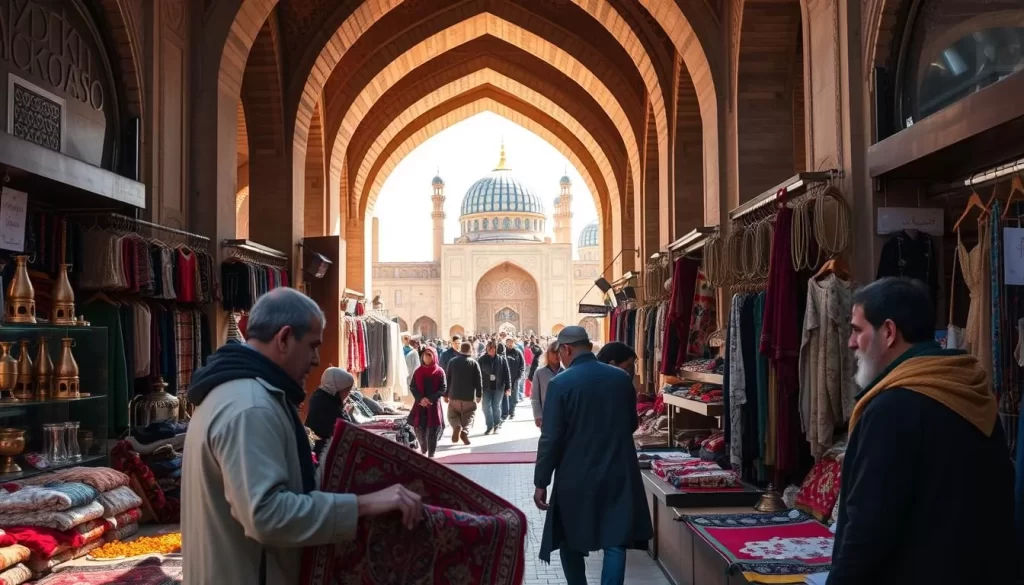
Authentic Shopping in Gheysarieh Bazaar
Gheysarieh Bazaar is celebrated for its deep-rooted culture and history. It has been a trading hub for centuries, reflecting the city’s economic and social life. As you wander through its alleys, you’ll find authentic Iranian goods, from spices to handmade jewelry.
The bazaar offers a unique shopping experience. You can interact with local artisans and learn about their crafts. The aroma of spices, the vibrant colors of Persian rugs, and the chatter of vendors create a sensory-rich environment.
Spending a day here gives you a glimpse into the local way of life. Whether you’re shopping for souvenirs or simply exploring, the bazaar is a window into the region’s traditions and daily rhythms.
| Highlights of Gheysarieh Bazaar | Why It’s Special |
|---|---|
| Persian Carpets | Handwoven with intricate designs |
| Spices & Herbs | Fresh and aromatic, sourced locally |
| Handicrafts | Unique items made by skilled artisans |
“The bazaar is not just a place to shop; it’s a living museum of culture and history.”
From the Sheikh Lotfollah Mosque to the nearby bridge, the bazaar is surrounded by landmarks that add to its charm. It’s a perfect spot to immerse yourself in the city’s rich heritage while enjoying a memorable shopping experience.
Historic Bridges & Riverside Attractions
Take a journey along the Zayandeh River and discover the historic bridges that define this city’s skyline. These structures, dating back to the 17th century, are not just functional crossings but also architectural masterpieces. They blend beauty and purpose, offering a glimpse into the city’s rich past.
Khaju Bridge: Architectural Marvel
The Khaju Bridge is a stunning example of Persian engineering. Built during the Safavid era, it features 23 arches and serves as both a bridge and a dam. Its design includes a pavilion where royalty once gathered to enjoy the river views.
In the evening, the bridge is illuminated, creating a magical atmosphere. Locals and tourists alike gather here to enjoy the serene ambiance and the sound of water flowing beneath. It’s a perfect spot for a leisurely stroll or a quiet moment of reflection.
Si-o-se-pol: The Bridge of 33 Arches
Another iconic site is the Si-o-se-pol, or the Bridge of 33 Arches. Spanning the Zayandeh River, it’s one of the longest bridges in the region. Its grandeur and symmetry make it a favorite among photographers and history enthusiasts.
Constructed during the same century as Khaju Bridge, Si-o-se-pol was part of the city’s urban expansion. Today, it stands as a testament to the ingenuity of Persian architects. Walking across it, you’ll feel the echoes of centuries past.
| Bridge | Key Features | Historical Significance |
|---|---|---|
| Khaju Bridge | 23 arches, evening illumination, pavilion | Royal gathering spot during the Safavid era |
| Si-o-se-pol | 33 arches, symmetrical design | Part of urban expansion in the 17th century |
These bridges are more than just landmarks; they’re living pieces of history. Whether you’re exploring during the day or enjoying the evening lights, they offer a unique way to connect with the city’s heritage. Don’t miss the chance to experience their timeless beauty.
Getting Around: Transportation Tips for Your Esfahan Journey
Navigating this historic city is easier than you might think, with multiple transportation options at your fingertips. Whether you’re arriving by plane, bus, or train, the city’s well-connected network ensures a smooth travel experience. Planning ahead can make your trip even more enjoyable, so here’s a guide to help you get started.
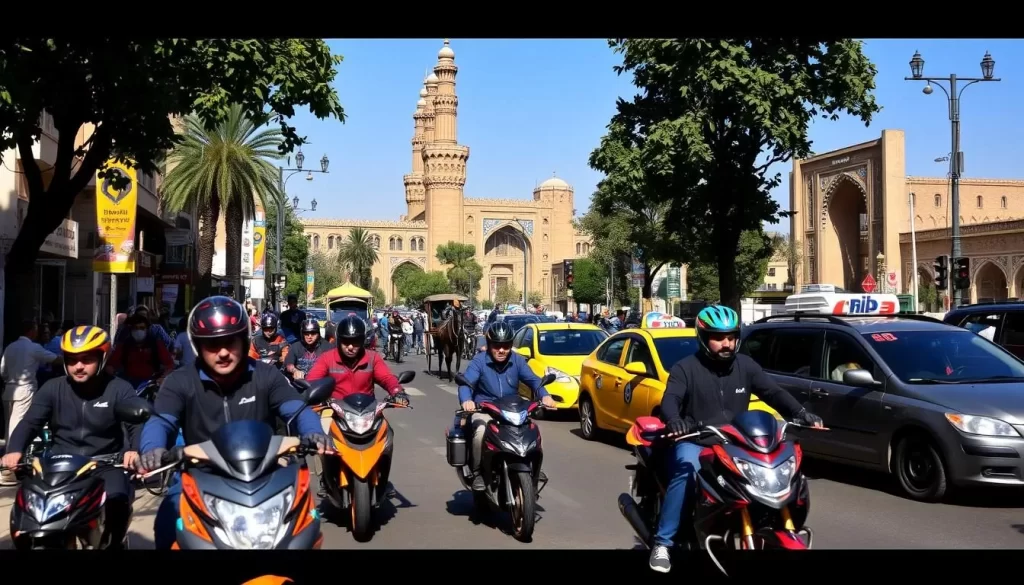
Air, Bus, and Train Options
If you’re flying in, the International Airport is your gateway to the city. It offers convenient connections to major hubs like Tehran and Shiraz. Domestic flights are a great option for long distances, saving you time and effort.
For those who prefer ground travel, the bus network is extensive and reliable. Buses run regularly between major cities, with a typical journey taking about 4 to 5 hours. It’s a budget-friendly way to explore the region while enjoying the scenic views.
Train travel is another excellent choice, especially for longer trips. Booking early is recommended, as trains can fill up quickly. The overnight journey back to Tehran, for example, is a unique experience, offering a glimpse into local life.
| Transportation Mode | Key Features | Travel Time |
|---|---|---|
| Air | Fast, convenient for long distances | 1-2 hours (domestic) |
| Bus | Affordable, scenic routes | 4-5 hours (intercity) |
| Train | Comfortable, overnight options | 6-8 hours (overnight) |
Once you’re in the city, getting around is equally straightforward. Taxis and ride-hailing apps are widely available, making it easy to explore at your own pace. For a more immersive experience, consider walking or cycling through the historic streets, where every corner tells a story from the 17th century.
Taste of Esfahan: Local Food and Dining Adventures
Dive into a culinary adventure that blends centuries-old traditions with vibrant flavors. This city’s food scene is a reflection of its rich history and culture, offering dishes that are as diverse as they are delicious. From hearty stews to delicate desserts, every meal tells a story.
Traditional Persian Cuisine Highlights
One of the must-try dishes is Biryani, a flavorful rice dish layered with spices and meat. Another favorite is Khoresht-e Mast, a unique yogurt-based stew that’s both tangy and savory. For vegetarians, Bademjan (eggplant stew) and Ash Reshteh (herb and noodle soup) are excellent choices.
Local restaurants and tea houses are known for their warm hospitality. Many of these establishments are housed in historic buildings, some featuring intricate dome ceilings that add to the ambiance. Dining here is not just about the food; it’s about the experience.
Why a Food Tour is Essential
A food tour is an essential part of your visit. It allows you to sample a variety of dishes while learning about their cultural significance. Many tours also include stops at local markets, where you can see fresh ingredients being prepared.
For an authentic experience, look for restaurants that are popular with locals. These hidden gems often serve the most traditional and flavorful meals. Don’t forget to pair your meal with a cup of Persian tea, a staple in every hotel and home across the country.
“The flavors of Persian cuisine are a journey through time, offering a taste of history in every bite.”
Whether you’re enjoying a meal at a bustling bazaar or a quiet tea house, the city’s culinary scene is sure to leave a lasting impression. For more insights, check out this culinary tour to explore traditional Persian dishes in depth.
Esfahan, Iran: Best Things to Do – Top Picks
Explore a destination where every corner tells a story of art, history, and culture. From the grandeur of Naqsh-e Jahan Square to the intricate designs of the Sheikh Lotfollah Mosque, this city offers a way to step back in time while enjoying modern comforts.
One of the highlights is the Ali Qapu Palace, a six-story marvel that offers panoramic views of the city. Its unique music room and royal history make it a must-visit. Nearby, the Shah Mosque stands as a testament to Persian architecture, with its grand courtyard and echo phenomenon.
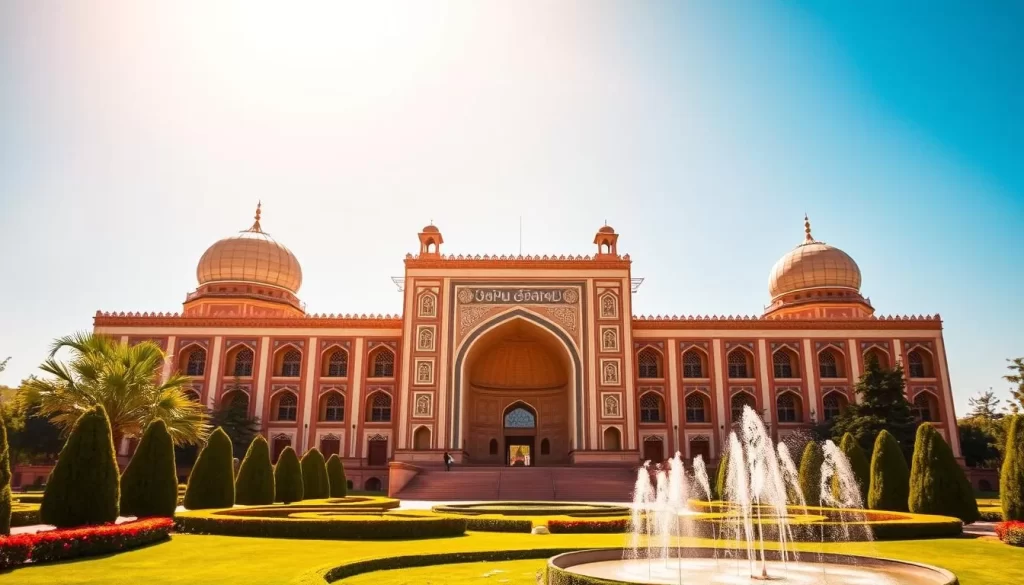
For a cultural experience, head to the bustling bazaars. Here, you’ll find everything from handmade carpets to aromatic spices. It’s a way to connect with local traditions and take home unique souvenirs.
Don’t miss the historic bridges along the Zayandeh River. The Khaju Bridge and Si-o-se-pol are architectural wonders that have stood the test of time. They’re perfect for a leisurely stroll or a quiet moment of reflection.
Whether you’re revisiting favorite spots or exploring off-the-beaten-path areas, this city has something for everyone. Plan your visit with confidence and make the most of your time here. For more tips, check out this guide to ensure a memorable trip.
“Every step in this city is a journey through centuries of art, culture, and history.”
Learning Esfahan’s History & Experiencing Its Art Scene
Uncover the layers of history and artistry that define this vibrant destination. From ancient landmarks to modern galleries, the city offers a rich tapestry of cultural experiences. Whether you’re an art enthusiast or a history buff, there’s something here to captivate your imagination.
Museums, Galleries, and Cultural Centers
Explore the city’s art scene through its museums and galleries. These spaces showcase everything from traditional Persian art to contemporary works. Many cultural centers also offer educational tours, giving you a deeper understanding of the region’s artistic legacy.
Historical landmarks like Naqsh-e Jahan Square and the Shah Mosque serve as living museums. They highlight the intricate designs and craftsmanship of the Safavid era. Visiting these sites is like stepping into a time capsule of Persian culture.
- Discover the Naqsh-e Jahan Square, a UNESCO World Heritage Site that blends art and history seamlessly.
- Visit the Shah Mosque, known for its stunning architecture and cultural significance.
- Explore local galleries that feature both traditional and modern Persian art.
“Art and history are intertwined here, offering a unique glimpse into the soul of the city.”
For a deeper dive into the city’s heritage, consider joining a guided tour. These experiences often include visits to lesser-known sites and insights from local experts. You’ll leave with a richer appreciation for the art and history that shape this destination.
Ready to explore more? Check out this guide for additional tips on making the most of your visit. Whether you’re admiring ancient architecture or discovering modern art, the city’s cultural scene is sure to inspire.
Planning Your Visit: When to Go & Where to Stay
Plan your trip to a city where history and culture come alive. Timing your visit and choosing the right accommodations can make your journey unforgettable. Whether you’re exploring the stunning mosque isfahan or wandering through vibrant bazaars, planning ahead ensures a seamless experience.
Best Time to Visit and Local Festivals
The best time to visit is during spring (March to May) and autumn (September to November). These months offer mild weather, perfect for exploring outdoor attractions like the unesco world heritage sites. Spring brings blooming gardens and festive celebrations, while autumn offers fewer crowds and comfortable temperatures.
Local festivals add to the charm of your visit. Events like the Esfahan Music Festival and traditional Nowruz celebrations provide a deeper connection to the city’s culture. These gatherings are a great way to experience the vibrant spirit of the region.
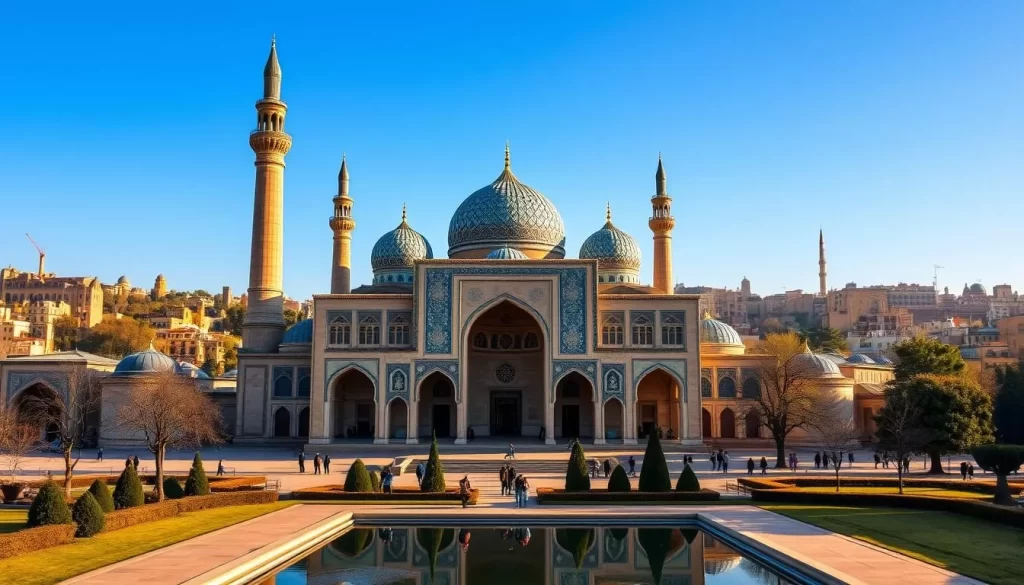
Top Accommodation Options
From luxurious boutique hotels to budget-friendly hostels, the city offers a range of accommodations to suit every traveler. Many hotels are located near major attractions, ensuring easy access to the mosque isfahan and other landmarks. Look for places with spacious rooms and modern amenities for a comfortable stay.
Booking early is key to securing the best deals. Online platforms often offer discounts, especially during off-peak seasons. Whether you prefer a cozy guesthouse or a high-end hotel, planning ahead ensures you get the most value for your stay.
For more tips on the best times to visit and where to stay, check out this guide. It’s packed with practical advice to help you plan a memorable trip. With the right timing and accommodations, your visit will be a truly enriching experience.
Conclusion
Your journey through this historic city promises unforgettable moments, blending rich heritage with vibrant local life. From the stunning world heritage sites to the bustling bazaars, every corner tells a story of art and history. The illuminated bridges over the water at night create a magical atmosphere, perfect for a leisurely stroll or a quiet reflection.
Don’t miss the chance to explore the Jameh Mosque, a masterpiece that showcases centuries of architectural evolution. Its intricate designs and serene ambiance offer a glimpse into the city’s spiritual and artistic legacy. Whether you’re marveling at historic palaces or savoring local cuisine, the cultural experience here is truly enriching.
Plan your visit to immerse yourself in this extraordinary destination. For more insights, check out this guide to make the most of your trip. The memories you create here will leave a lasting impression, inspiring you to return again and again.
The above is subject to change.
Check back often to TRAVEL.COM for the latest travel tips and deals.
